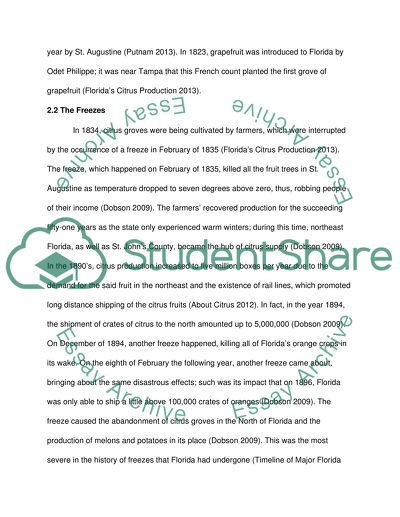Cite this document
(“Citrus industry in Florida Research Paper Example | Topics and Well Written Essays - 1250 words”, n.d.)
Retrieved from https://studentshare.org/history/1469692-citrus-industry-in-florida
Retrieved from https://studentshare.org/history/1469692-citrus-industry-in-florida
(Citrus Industry in Florida Research Paper Example | Topics and Well Written Essays - 1250 Words)
https://studentshare.org/history/1469692-citrus-industry-in-florida.
https://studentshare.org/history/1469692-citrus-industry-in-florida.
“Citrus Industry in Florida Research Paper Example | Topics and Well Written Essays - 1250 Words”, n.d. https://studentshare.org/history/1469692-citrus-industry-in-florida.


